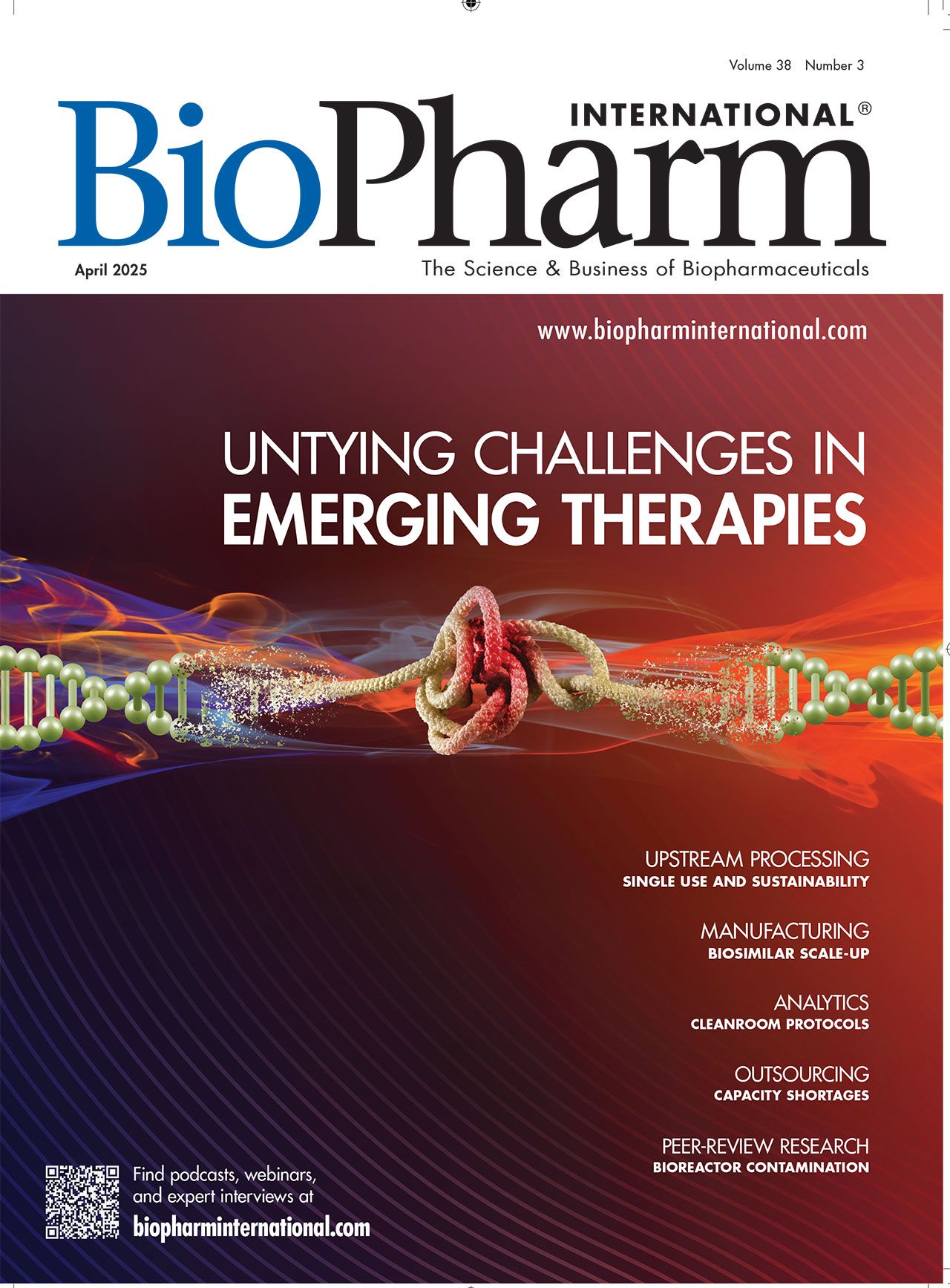Investigating Bioreactor Contamination, Modeling Contaminant Introduction, and Ensuring Bioburden Test Reliability
This paper outlines a systematic approach to detecting contamination through process deviations, including changes in % dissolved oxygen, pH, and metabolic patterns.
Grispb – stock.adobe.com

Abstract
Bioreactor contamination in mammalian cell culture processes presents a significant challenge, requiring prompt identification, investigation, and mitigation. This document outlines a systematic approach to detecting contamination through process deviations, including changes in % dissolved oxygen, pH, and metabolic patterns. Upon confirmation, immediate containment measures are implemented to prevent further spread. A structured sampling strategy involving bioburden testing, molecular identification, and growth rate analysis supports root cause determination. Mathematical models aid in estimating contamination introduction time and microbial growth dynamics, improving contamination traceability. Statistical approaches, including Poisson probability analysis, evaluate the reliability of bioburden testing and minimize false negative risks. Additionally, bioreactor activity chronologies and contamination source mapping provide a comprehensive framework for identifying contamination entry points. This approach enhances contamination control strategies, ensuring robust bioprocess integrity.
Introduction
Bioreactor contamination in mammalian cell culture processes can compromise product quality, yield, and regulatory compliance. Identifying contamination early is crucial for minimizing its impact and implementing corrective actions. Contamination events are often detected through deviations in key process parameters, including % dissolved oxygen (DO), pH fluctuations, and unexpected metabolic shifts. These deviations suggest microbial proliferation, necessitating immediate containment measures to prevent further spread and cross-contamination.
A comprehensive contamination assessment strategy involves systematic bioburden testing and microbial identification techniques. Understanding the timeline of contamination introduction allows for targeted investigations, leveraging mathematical models to estimate bacterial growth rates and contamination onset. Furthermore, statistical approaches, such as Poisson distribution analysis, ensure the reliability of bioburden test results and optimize microbial monitoring protocols. By aligning bioreactor process history with contamination estimates, potential entry points and vulnerabilities can be mapped, facilitating root cause analysis and preventive action planning. This document details the methodologies employed for contamination identification, response, and prevention, emphasizing the importance of rigorous process monitoring and control.
Identification of bioreactor contamination
Bioreactor contamination in mammalian cell culture process is identified through process deviations, primarily characterized by a drop in % DO, which indicates increased microbial respiration due to the presence of contaminants. A drastic decrease in pH suggests metabolic acid production by contaminating organisms as they proliferate. Additionally, unusual metabolic shifts or changes in nutrient consumption patterns that deviate from expected process behavior may signal contamination. Unexpected changes in cell growth and viability compared to historical process data further support the presence of contamination, highlighting the need for prompt investigation and corrective action.
Immediate action upon contamination confirmation
Upon confirming contamination, containment measures involve isolating the bioreactor and ceasing all operations to prevent further spread. Feed additions, including nutrient supplements, base titrant, and antifoam, are halted to eliminate potential secondary sources of contamination. A rapid contamination assessment is conducted to gauge the severity of microbial invasion and its potential impact on the batch. Simultaneously, a thorough contamination investigation and bioburden assessment are initiated to characterize the contaminant and determine the root cause, ensuring appropriate corrective actions are implemented.
Sampling strategy
Sampling is performed at critical points to assess bioburden load and identify potential contaminants. In addition to bioreactor sampling, feed sources are tested near entry points, with collected samples undergoing bioburden testing to determine colony-forming units (CFU)/mL, Gram staining for preliminary bacterial classification, and molecular methods for bacterial identification. Turbidity testing (NTU) is conducted through serial dilution to further assess bioburden levels. To evaluate microbial growth dynamics in feed storage conditions, feed samples are analyzed at three time points: upon contamination identification (Time 0), six to eight hours post-identification (Time 1), and an additional six to eight hours later (Time 2). This approach enables the estimation of microbial growth rates and facilitates back-calculation of bacterial load at the time of potential contamination introduction to bioreactors if feed contamination is confirmed.
Click here for a PDF of this article.Peer-reviewed
Submitted: Feb. 12, 2025
Accepted: March 6, 2025
About the author
Naveenganesh Muralidharan, nmural@agcbio.com, is senior manager, Manufacturing Science and Technology (MSAT), at AGC Biologics.
Article details
BioPharm International®
Vol. 38, No. 3
April 2025
Pages: 20–24
Citation
When referring to this article, please cite it as Muralidharan, N. Investigating Bioreactor Contamination, Modeling Contaminant Introduction, and Ensuring Bioburden Test Reliability. BioPharm International 2025, 38 (3), 20–24.

Thermo Fisher Opens Advanced Therapies Collaboration Center in California
April 18th 2025The 6000-square-foot facility will provide cell therapy developers the support they need to transition to CGMP manufacturing, and an expanded footprint of the new center is expected to open in Philadelphia later in 2025.